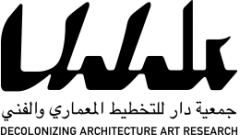Posted: 23.03.2012
April, 14 CORNELL UNIVERSITY
The Camp as Political Project
Since its invention in colonial territories, the “camp form” has been used as an instrument for exceptional regimes in which citizens are stripped from their political rights. Despite the more recent scholarly works has been able to locate the figure of the refugee and its associate spatial dimension the camp as central critical category of our present spatial political organization, the refugee is reduce to a passive subject, lacking an independent and autonomous political subjectivity and the camps are looked at only as a site of marginalization and exclusion. In this paper I’ll will present emerging spatial practices and projects in refugee camps in Palestine, which not only challenge the idea of camps as site of humanitarian intervention but they suggests new political, social and spatial configurations. Refugee camps are today site from which we have to start to re-think the very idea of the city as a space of political representation, thinking the camp as a laboratory for spatial and political practices yet to come.
___________________________________________________________________________
April 16 CUNY
Common Assembly
For the occasion of DAAR’s exhibition at The James Gallery – Center for the humanities, Alessandro Petti’s lecture will deal with new forms of political action and association – collective protests — in the Middle East and around the world. The term Common Assembly comes to name a radical form of political participation and collective actions that has been used, in different variations, within different contexts of revolutionary protest from Cairo’s Tahrir square to the stairs of St Paul’s cathedral. These forums of action have changed the meaning of political categories: The Common — a form of space different from both public and private, sometimes extracted from them in which an immanent form of association replaces state regulated form of publicity. The situation against which protest occurred is that in which the “public” no longer belonged to the “people” — rather to regime performance or to private capital accumulation. The act of cleaning in Tahrir Square was the manifestation of turning the public into the common. Assembly – a form of immanent political association and decision-making process that is distinct from the Parliamentary form. Assemblies are contingent, temporary, networked, expanding and contracting, always directed at action. Could we think of Palestinians camps not as places of refuge but rather as those of assembly? Spaces from where a new political ideas and form of action could arise? Where political participation and representation are organized beyond the idea of nation-state? Occupation — a word that the current landscape of events seem to be in the process of decolonizing. It is extracted from the jaws of the military jargon into a form of direct action that aim at dismantling existing system of power. It is true that new media played an important role to mobilizing and organizing the protests. However it was the prolonged physical occupation of the spaces that created the possibility of political change. Common Assemblies pop up in different slippages and cracks in property and land systems: a park whose jurisdiction is ambiguous, in the relative extraterritoriality of a church land within the extraterritorial frame of the city of London, public roundabouts in Cairo and Bahrain. Isn’t it reveling that the Bahrain military forces destroyed the Pearl roundabout — reiterating! — rather then demolishing – the potential power of space and spatial construction. The lecture would like to engage the public around the nature of the these forms of political participation and action.
___________________________________________________________________________
April 18 MIT
A Program for an Architectural Decolonization
Since its establishment five years ago, DAAR, the architectural collective and art residency program based in Palestine, has developed a series of projects that today could be understood retroactively as a pragmatic and visionary program for an Architectural decolonization of Palestine. DAAR’s projects suggest revisiting the largely discredited term of decolinization in order to maintain a distance from the current political language of a “solution” to the Palestinian conflict and its respective borders. The one-state, two-state, and now three-state solutions seem equally entrapped in their respective “top-down” expert perspective, each with its own self-referential logic. Decolonization, on the contrary, seeks to unleash a process of open-ended transformation toward the goals of equality and justice. It looks for and finds cracks where potential for transformation and reuse of the existing dominant structures, architectural infrastructural and legal, could be found. It is a sometimes confrontational, at other times cunning approach to the reality of occupation and dispossession. Decolonization is a counter apparatus that seeks to restore to common use, to fantasy and play, what the colonial order had separated and divided. The goal of decolonization is the construction of counterapparatuses that find new uses for the abandoned structures of domination. These uses are sometimes pragmatic and at other times ironic or provocative challenges. As such, “decolonization” is never achieved, but is an ongoing practice of deactivation and reorientation understood both in its presentness and in its endlessness. DAAR’s projects do not articulate a utopia of ultimate satisfaction. Rather they try to mobilize architecture as a tactical tool within the unfolding struggle for Palestine. They seeks to employ tactical physical interventions to open a possible horizon for further transformations.
